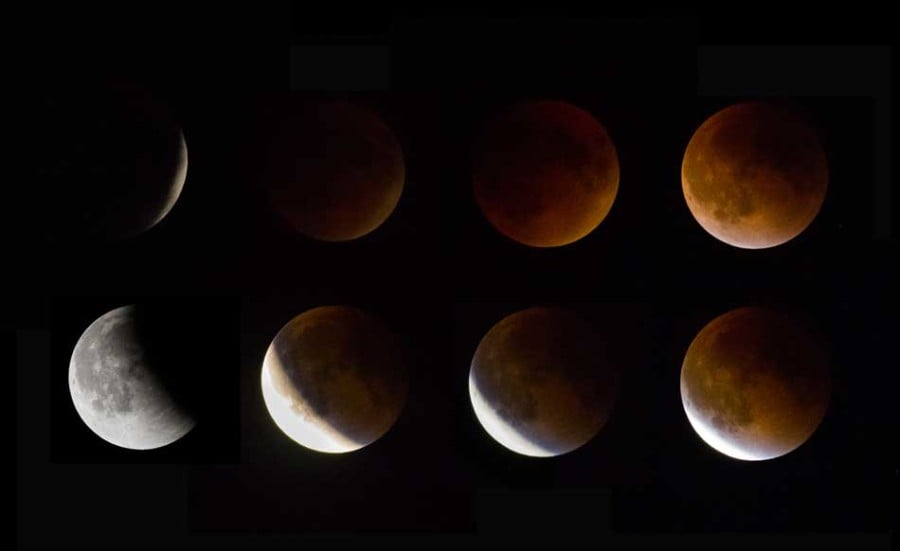Northwestern hosts lunar eclipse viewing party
Daniel Tian/ Daily Senior Staffer
Different phases of the moon were overlayed in one image as the night progressed on Sunday. The rare transformation occurred during a special total lunar eclipse.
September 28, 2015
In light of the rare coincidence of a lunar eclipse and full moon Sunday night, Northwestern’s Center for Interdisciplinary Exploration and Research in Astrophysics hosted a viewing party for guests to watch the supermoon eclipse, with telescope stations and CIERA astronomers present to enhance the experience.
By opening the event to the public for free, CIERA hoped to bring people together to share the excitement of the special phenomenon, said John Everett, assistant director of operations in CIERA.
“We love eclipses because they are such a great event for people to share,” Everett said. “You can have a huge group get together and view this event altogether and experience it together, and it’s a great way to get a sense for the geometry of the universe — plus it’s just a lot of fun.”
Despite the cloudy weather, around 1,700 community members still crowded the top level of the Segal Visitors Center parking garage to await the eclipse together, according to CIERA .
“It’s great that they’re drawing a lot of people in that wouldn’t have otherwise known about this event or have gotten to see it up this close,” Bienen freshman Aidan Perreault said.
Beyond the excitement of the eclipse sighting, the significance of the supermoon itself is more complex, said Ben Nelson, CIERA data science scholar and postdoctoral fellow. Nelson also said three special aspects of the moon tonight added to its unique presence.
“First, the moon is in its phase where it is physically closest to the Earth, so it appears bigger in the sky,” Nelson said. “Diameter wise, it is about 14 percent bigger, but in terms of its area, it is about 30 percent bigger.”
During this time of year, the moon appears in the sky early each evening, a phenomenon known as the harvest moon. Farmers would use the light of the moon to stay out longer to harvest their crops.
The third aspect is the lunar eclipse, when the moon passes into the Earth’s shadow and turns a blood-red color.
“If you were on the moon looking back at the Earth, you would see the Earth eclipsing the sun, and you’d see all the sunsets and sunrises on Earth at the same time,” Nelson said. “All the red light that is filtered from the Earth’s atmosphere shines onto (Earth), but the moon also shines back onto the Earth, so that’s how we see all the red light.”
The peak of the eclipse occurred at 9:47 p.m., magnified by its large size and deep red color. The last supermoon eclipse occurred 33 years ago, and the next one will not be for another 18 years.
“It brings us out of the common idea that you look up to the sky and things are rotating above you, where it almost looks like you’re just standing still and everything else is going in front of you,” Everett said. “But when you see one of these eclipses, you realize you can get a glimpse of how they’re all connected and (how) we’re all part of this motion.”
Correction: Due to an editing error, a previous version of this story misstated the number of people who stopped by CIERA’s lunar eclipse watch party. 1,700 people stopped by the event. The Daily regrets the error.
Email: [email protected]
Twitter: @fathma_rahman


